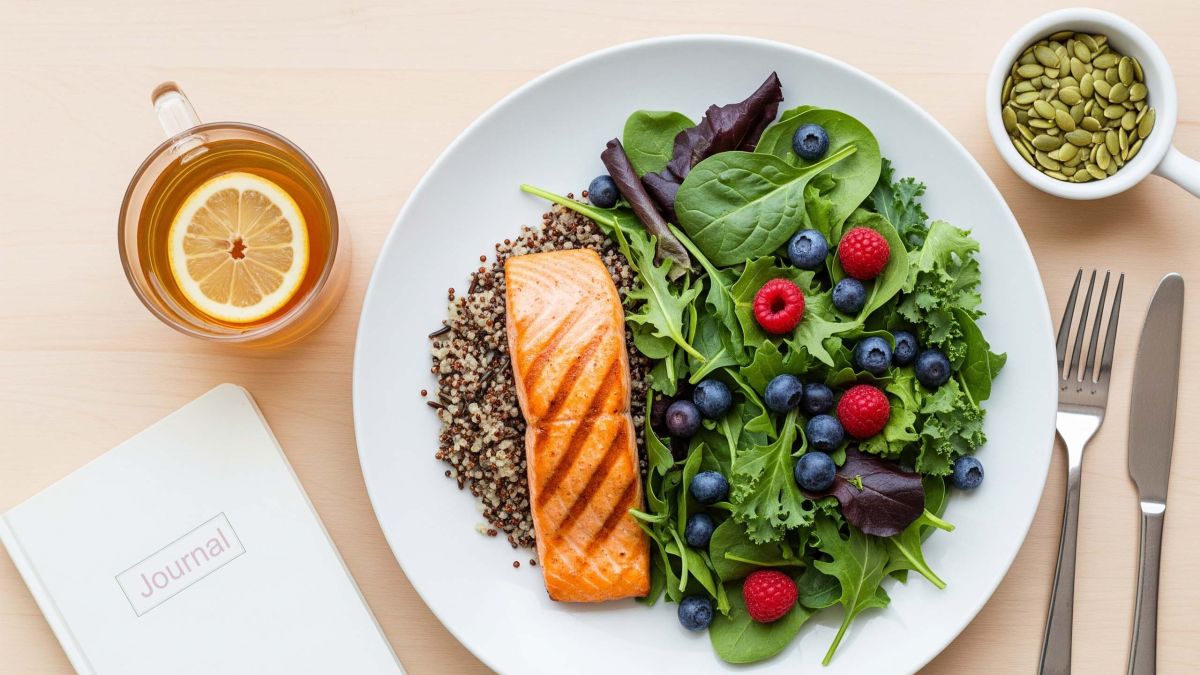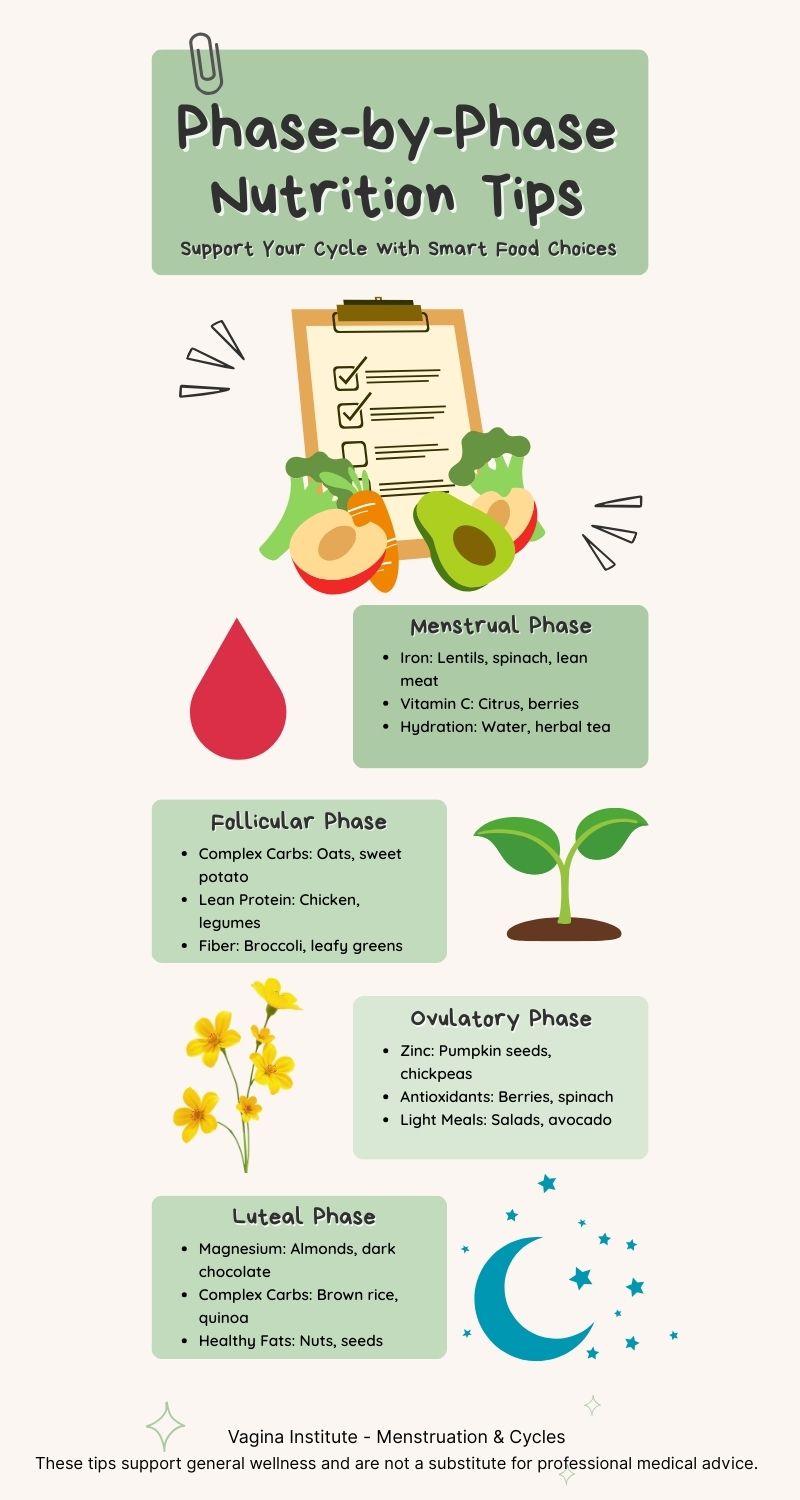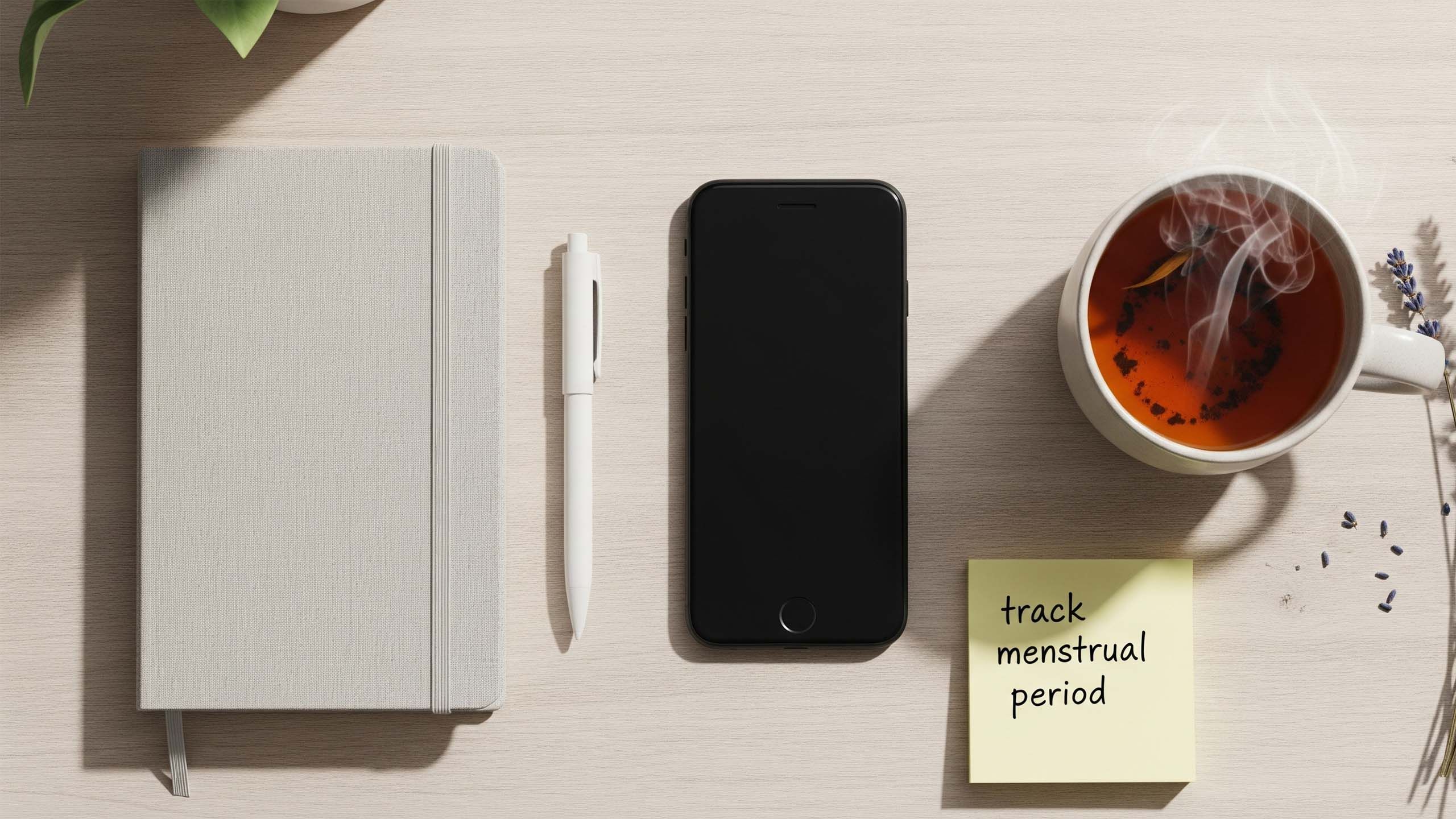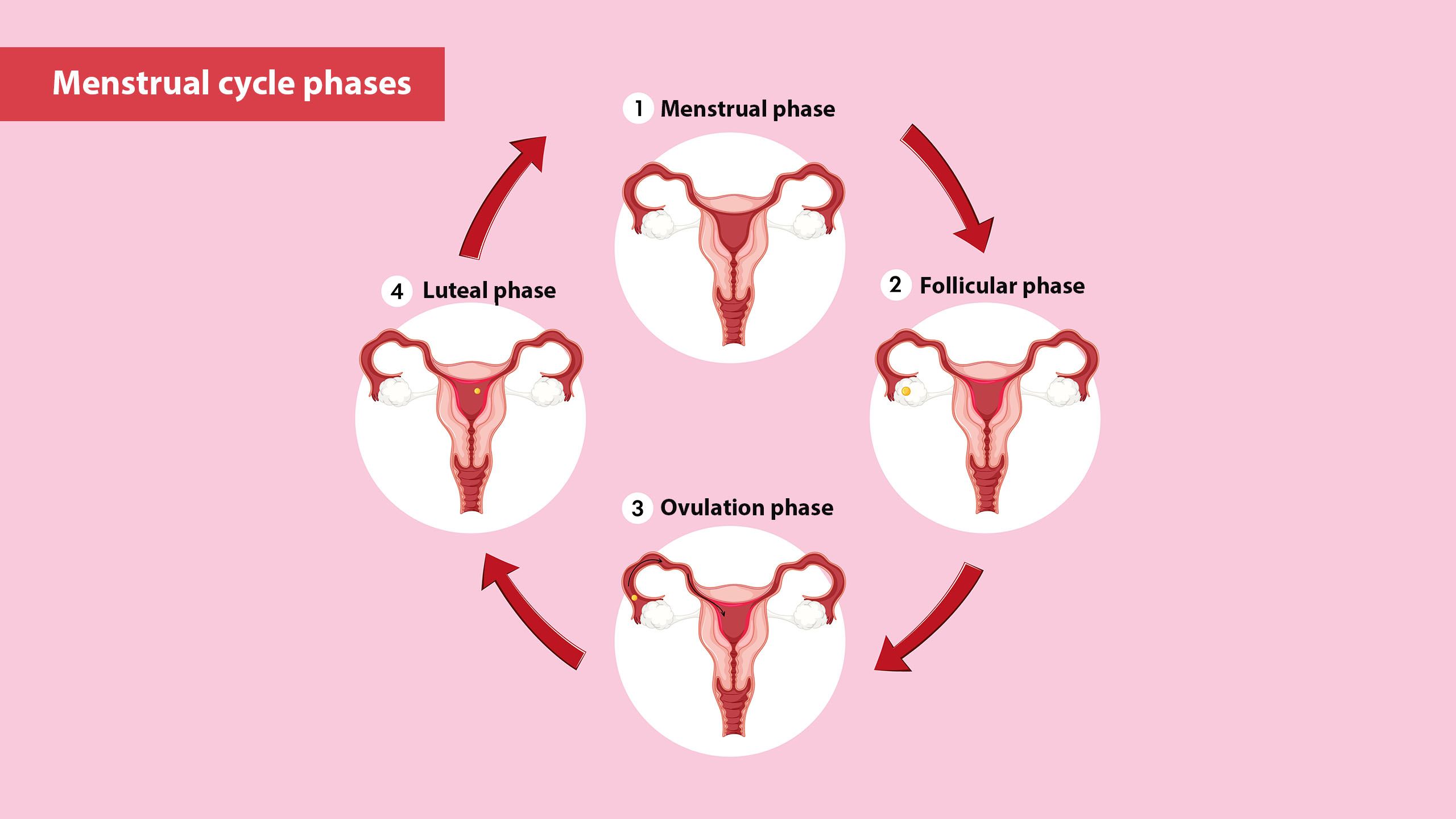Nutrition Tips for Supporting a Healthy Menstrual Cycle

Your menstrual cycle is more than just a monthly event—it’s a reflection of your overall health. While genetics and hormones play a role, nutrition is one factor you can actively manage. The right foods can help reduce common symptoms like fatigue, bloating, and mood swings while promoting hormonal balance and energy levels.
This guide focuses on practical, science-backed nutrition strategies to support a healthier, more comfortable cycle.
Understanding the Connection Between Nutrition and Your Cycle
Hormones regulate your menstrual cycle, and these hormones rely on nutrients for production and balance. Poor diet, nutrient deficiencies, and blood sugar imbalances can make PMS worse, affect mood, and even influence the length or comfort of your cycle. By making thoughtful food choices, you can help your body maintain hormonal harmony and reduce unnecessary stress on your system.
Phase-by-Phase Nutrition Tips
Your menstrual cycle typically has four phases—menstrual, follicular, ovulatory, and luteal. Each comes with unique hormonal shifts and nutrient needs.
1. Menstrual Phase (Days 1–5)
This is when bleeding occurs. Energy levels may be lower, and iron loss can leave you feeling tired.
What to focus on:
-
Iron-rich foods: Lean red meat, lentils, beans, tofu, spinach, and pumpkin seeds.
-
Vitamin C sources: Citrus fruits, bell peppers, and berries to help your body absorb iron.
-
Hydration: Herbal teas and water to offset fluid loss.
2. Follicular Phase (Days 6–13)
Estrogen begins to rise, and energy levels often improve. This is a good time to fuel your body with nutrient-dense foods that support hormone production.
What to focus on:
-
Complex carbs: Oats, quinoa, and sweet potatoes for sustained energy.
-
Lean proteins: Chicken, fish, legumes, and eggs for tissue repair and hormone synthesis.
-
Fiber-rich foods: Broccoli, leafy greens, and berries to support digestion and estrogen balance.
3. Ovulatory Phase (Around Day 14)
This is the peak of estrogen and luteinizing hormone, and your appetite may fluctuate.
What to focus on:
-
Zinc-rich foods: Pumpkin seeds, chickpeas, and cashews for ovulation support.
-
Antioxidant-rich foods: Berries, spinach, and dark chocolate to combat oxidative stress.
-
Light, fresh meals: Salads with healthy fats like avocado or olive oil for energy without heaviness.
4. Luteal Phase (Days 15–28)
Progesterone rises, and PMS symptoms can appear. Cravings for sugar and salty snacks are common.
What to focus on:
-
Magnesium-rich foods: Almonds, dark chocolate, and leafy greens to ease cramps and mood swings.
-
Complex carbs: Brown rice, whole-grain pasta, and starchy vegetables to stabilize blood sugar.
-
Healthy fats: Nuts, seeds, and oily fish to support hormone production.

Additional Tips for a Healthier Cycle
-
Limit processed foods and excess sugar: They can cause blood sugar spikes, worsening mood swings and cravings.
-
Stay hydrated: Water supports circulation and reduces bloating.
-
Balance caffeine and alcohol: Both can affect hormone balance and hydration levels.
-
Don’t skip meals: Skipping meals can stress your system and lead to energy crashes.
Sample One-Day Cycle-Friendly Meal Plan
Here’s an example for the luteal phase when PMS symptoms might hit:
| Meal | What to Include |
|---|---|
| Breakfast | Oatmeal topped with almond butter, berries, and chia seeds — provides complex carbs, healthy fats, and fiber. |
| Lunch | Grilled salmon with quinoa and roasted vegetables — protein, omega-3s, and iron-friendly foods. |
| Snack | Dark chocolate (70%+) and a small handful of almonds — magnesium and healthy fats to ease cravings. |
| Dinner | Chicken stir-fry with brown rice and broccoli — complex carbs, lean protein, and fiber to stabilize blood sugar. |
Final Thoughts
Supporting your cycle through nutrition isn’t about restriction or perfection. It’s about small, consistent choices that help your body work with its natural rhythm. By focusing on whole, nutrient-rich foods and being mindful of phase-specific needs, you can make your menstrual cycle feel more manageable and less disruptive.
Q & A
-
Q: Can diet actually change my cycle length?
A: Diet can influence factors that affect your cycle—like body weight, major nutrient deficiencies, and sustained high/low caloric intake—but small, short-term changes in food usually won’t dramatically change cycle length. Persistent changes should be discussed with a clinician. -
Q: Which nutrients are most important if I have heavy periods?
A: Iron is central. If you have heavy bleeding, focus on iron-rich foods (lean red meat, legumes, dark leafy greens) and vitamin C to aid absorption. Talk to your healthcare provider about testing for iron-deficiency anemia. -
Q: Will cutting carbs reduce PMS symptoms?
A: Severely cutting carbs may increase irritability and cravings. Choosing complex carbohydrates (whole grains, starchy vegetables) helps stabilize blood sugar and can reduce mood swings and cravings. -
Q: Are supplements necessary?
A: Many people can meet needs through food. Supplements (iron, magnesium, B vitamins, omega-3s) can help in certain cases — especially if a deficiency exists. Consult a clinician before starting supplements, especially iron. -
Q: How soon will I notice benefits after changing my diet?
A: Some people notice improvements in energy or bloating within a few days to weeks; hormonal effects can take one or more cycles (4–8 weeks) to become apparent. -
Q: Is caffeine bad for my cycle?
A: Moderate caffeine intake is generally fine, but high amounts can worsen breast tenderness, anxiety, or sleep disruption for some people. Try reducing intake in the luteal phase if you notice symptoms. -
Q: What if I’m vegetarian or vegan — can I still support my cycle with diet?
A: Yes. Focus on plant iron sources (lentils, tofu, pumpkin seeds) combined with vitamin C-rich foods for absorption; include sources of omega-3s (walnuts, flaxseed, algae-based supplements) and varied proteins. -
Q: Should I track symptoms and food together?
A: Yes — a simple tracker can help identify patterns (e.g., sugary snacks and worse cramps). Tracking for 2–3 cycles gives useful insight to adjust dietary choices.
Disclaimer: The articles and information provided by the Vagina Institute are for informational and educational purposes only. This content is not intended to be a substitute for professional medical advice, diagnosis, or treatment. Always seek the advice of your physician or another qualified health provider with any questions you may have regarding a medical condition.


 English
English  Deutsch
Deutsch  Español
Español  Français
Français 




